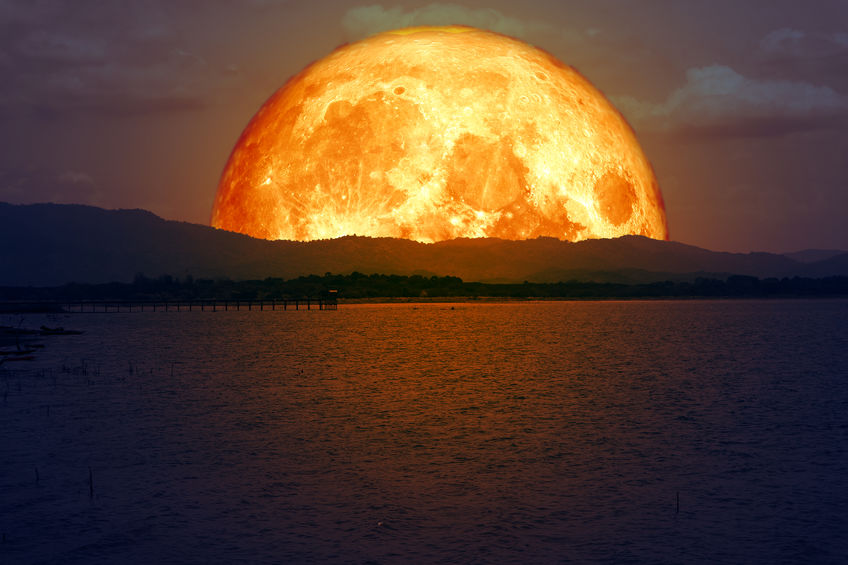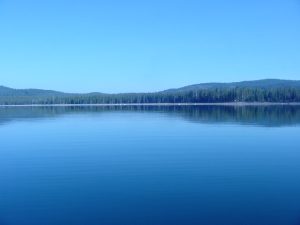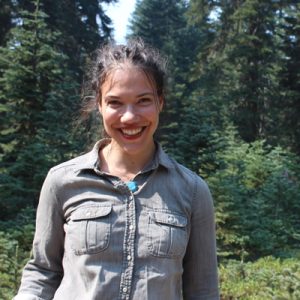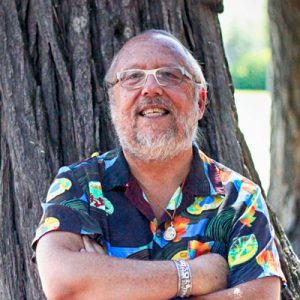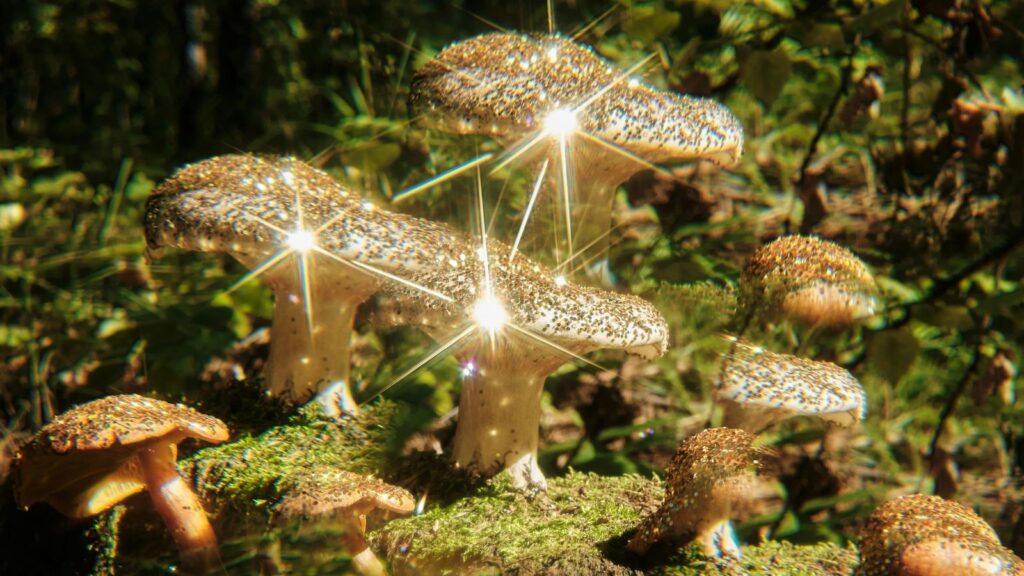In California, fire and water are the big worries. How can we ensure having enough fresh water? How can we avoid out of control wildfires? The water part of it seems simple: don’t poison the water. But it’s never been easy to stop big industry from contaminating for profit, now more than ever with the new administration rolling back regulations. As for fire, what if I told you that California’s recent crisis represents only a fraction of the acreage burned yearly before the practice of suppressing fires? Is fire the best way to fight fire?
They provide an example of how to fight for the environment that local communities anywhere can emulate. There’s more hope in their report from the front lines than you might expect. Ways that any reader can help address these important issues can be found in this interview.
Tamra Lucid: What is the mission of the Mount Shasta Bioregional Ecology Center? How and when did it begin?
Andy: Mount Shasta is a 14,180-foot (4,322 meter) stratovolcano in northern California near the Oregon border. Our mission is simple: we live at the base of an incredible mountain, as a community of people inspired to honor, protect and restore its surrounding landscape (or Bioregion).
The Ecology Center started thirty years ago. We came together to stop plans to build ski-condominiums on top of the most pristine meadows and springs high on the mountain. It was a terrible idea. Ten years later, we won that battle.
The Bioregionalism movement emphasizes harmony between human culture and the natural environment; it was one of the influences that inspired us. Though we collaborate and stay aware of broad planetary issues, our work is primarily local – and there’s plenty to do here for a small but feisty grassroots organization.
We protect people from fire by promoting best forest management practices, help keep our public lands public and accessible to both locals and visitors, and safeguard our pristine water sources and wildlife – there’s a list, and always more to add.
A lot of what we do is community education, understanding the facts and making sure we focus on what’s true and important locally. Well researched and solid environmental knowledge is basic to our work; at the same time, there are spiritual values which connect us all. You can feel something very special, just by looking up at Mount Shasta.
We respect and appreciate the culture of our local indigenous tribes. Visitors come here from around the world, seeking inspiration. It’s an amazing place.
Dr. Halpern is creating innovative new fire and forestry programs with broad community involvement. We seek to understand and interact with people who may or may not always agree with us, while staying true to core values. As a starting point: if your house burns down, that’s a bad thing – we can all agree.
This question is for Dr. Arielle Halpern regarding her quote, “We need to change our relationship with fire. We don’t have to fear it, we can work with it.” How do we do that? Is there anything our readers can do?
Arielle: Fire is a natural ecosystem process in the United States. In California, wildfires have increased in scale and severity for the past several years. That’s due to many conditions: fire suppression, climate change, changes in patterns of rain and snowfall, and an increased number of people living in communities in the wildland-urban interface (WUI).
The modern fire suppression period began around 1910. Before that time, between 5.6 and 13 million acres burned in California every year. Thus far in 2018, 1.4 million acres have burned in the state; it’s the worst wildfire year we’ve seen. It’s important to understand that fire is a perfectly natural process that has shaped the ecosystems and cultures of California and will continue to do so.
So, people can be proactive about accepting the facts. First and foremost: know where you live. Educate yourself on the flora and fire history around your home. That will foster appreciation of the natural environment (rural or urban) where you live, and also tell you a lot about how fire will behave near your community.
Familiarity reduces fear. Developing defensible space around your home and valued assets is another important part of changing this relationship and reducing fear. If the area around your home is properly “firescaped”, you will avert a sizable amount of danger if a wildfire moves through your area.
Firescaping means reducing fuels around your property, maintaining ingress and egress routes. Participating in your local fire safe council or a prescribed burn association is another wonderful way to reduce fear around fire.
Prescribed fire is an old practice that has a deep history in California’s biocultural landscape. Fire will not burn where there is no fuel. The most efficient way to remove fuel is through the targeted application of fire in prepared areas where that is possible, and through other techniques such as clearing brush and easily flammable materials near around your home.
Tell us about the long fight to stop geothermal-fracking near Medicine Lake.
Andy: Medicine Lake Highlands, 30 miles northeast of Mount Shasta, feeds the Fall River Springs, the largest spring system in California. Its volcanic aquifer stores more water than all the state’s surface reservoirs. These clean, clear waters flow downstream to literally millions of people. Incredibly, the geothermal industry has long wanted to bring hydraulic fracking and development there. In 1998 the federal Bureau of Land Management illegally renewed 26 leases for this purpose, covering 66 square miles in a designated Native American Cultural District.
So, along with a coalition of groups including the Pit River Tribe, Native Coalition and Medicine Lake Citizens, and represented by the Stanford Law clinic, we’ve been challenging their plans to drill 9,000 feet (almost 2 miles) into the aquifer and inject toxic chemicals into the ground and this water supply. That’s particularly insane given the sensitive hydrology and seismic risks in the area. It’s not even clear there is any economically viable resource there – the cost of producing this power is quite prohibitive.
Most recently, in 2017 the federal District Court in Sacramento denied the 40-year extensions of these leases, and now the BLM has appealed this decision to the Ninth Circuit Court. That court ruled favorably on three previous occasions, so our legal team remains optimistic.
Yes, this continues to be a long and drawn out struggle. It’s not only important here, it concerns everyone in California who drinks water!
What’s going on with Crystal Geyser water company in the area?
Andy: Together with several local tribes and citizens’ groups, we’re in several big fights with the water bottling industry. They’re happening on three fronts – in the cities of Mt. Shasta, Weed, and McCloud.
In Mt. Shasta, in 2013 we suddenly saw a picture in the local paper – the first we’d all heard about a deal with Otsuka Pharmaceuticals/Crystal Geyser. Smiling local officials were cutting ribbons in front of a building Dannon had shuttered three years earlier. Dannon was a nightmare – there were major noise, traffic and lighting issues, and their operation had seriously depleted nearby residential wells.
Crystal Geyser thought they could just start operating right away, but our local citizens came together to demand an environmental review (EIR). The plant is just outside Mt. Shasta city limits, in Siskiyou County jurisdiction. in December 2017 the county approved a flawed EIR which failed to address local concerns. In March 2018 the Mt. Shasta City Council approved an industrial waste discharge permit by a 3-2 vote.
The citizens’ group (which has now become its own nonprofit organization, with our full support) and the Winnemum Wintu Tribe have filed legal challenges demanding real environmental review and protections. These suits may be heard next year.
In the City of Weed, there’s a dispute about who owns the city’s historic water supply. The lumber company, Roseburg Forest Products, decided to take it over so they could sell a quarter of the town’s water supply more profitably to Crystal Geyser. Originally a company town, Weed (named for mill founder Abner Weed, just to clarify!) incorporated in 1961. The town took 2.0 cubic feet per second (cfs) of water from Beaughan Springs for 50 years, under a $1 per year contract with the mill.
When the contract expired in June 2016, Roseburg forced the city to start paying $97,500 per year for only 1.5 cfs of water. A provision in the new contract says the town also has to drill another well, at an estimated cost of over $2 million.
Citizens found a 1982 document showing the previous mill owners had actually assigned these water rights to the city. Roseburg and Crystal Geyser responded by filing a SLAPP (Strategic Lawsuit Against Public Participation), personally against 9 people for opposing the water grab. They wanted to silence any protest, by making each person pay thousands of dollars in legal costs. The court threw it out, but the companies appealed. Rights to the city’s water are still undetermined, and the battle continues.
In the unincorporated town of McCloud, back in 2009 Nestle abandoned plans to build a 1 million square foot bottling plant at their former mill site. Since then, new investors bought the mill, and have positive plans for sustainable development. However, another group purchased adjoining land, and their new proposal for water bottling is now before the local services district. They are only a development group with no water bottling experience – so clearly, there will be more to this story once we learn who is really behind this.
Mount Shasta has fantastic water. It comes off the mountain through volcanic aquifers, and can take 50 years to emerge from mountain springs. It’s no wonder the bottling companies are attracted. Still, these multinational corporations absolutely refuse to tell us how much water they’ll take. Without that basic information, environmental reviews are meaningless jokes.
Internationally – just think about how much energy it takes to send water, which weighs over 8 pounds per gallon, all the way around the world to Japan. And that doesn’t even get into the massive harm done by plastic bottle manufacturing, waste and pollution. It’s really simple: instead of bottled water, people need clean, local publicly owned water supplies, wherever they are in the world.
Andy: As a nonprofit, we can’t endorse or oppose candidates, which is how it should be. People in the federal agencies managing so much of our nearby land have always had to consider many different stakeholder perspectives, not just ours. That’s not new.
Still, it can’t be easy to work for the federal government these days. I’d imagine it’s particularly difficult for the many professional, ethical and serious people who value public lands and believe in established science. Regardless of politics, they’ve had to shift resources massively, away from accommodating visitors towards fighting fires. That’s bad for everyone.
It is very alarming what is happening on the national level. We value good relationships, and can find lots of common ground around sensible land stewardship and reducing fire dangers. At the same time, we must all strongly resist ideas for giving away our public lands and their resources. It’s so important to hold these lands in trust for future generations, and also not turn them into expensive theme parks – families need the outdoors, they’ve already paid taxes.
History gives us context. The Winnemum Wintu tribe once included 14,000 people, yet today their population is only about 150. Most of their ancestral lands have been submerged behind Shasta Dam since 1945.
Today we are gearing up to join the tribe, and really anyone who pays taxes, in a new fight against raising that dam. Despite recent “fake news”, this isn’t a done deal. It’s a boondoggle that violates California law and would waste at least $1.4 billion in taxpayer money. The numbers don’t even come close to meeting long-established federal financial criteria; taxpayers will never recover the costs. You don’t have to be an environmentalist to oppose it, you just have to know basic math!
Thousands of homes around the lake have burned this year, and others remain at risk from forest fires. Local people need help – it’s insane to let southern California water interests just throw away that much money.
Here, we often come up against long-standing beliefs, that people just have to wait until some big corporation, whether a timber company or a water bottler, comes to save us from poverty. Leveraged buyouts in the 1990s reduced forest employment. Yet ever since, there’s been huge resistance to new economic opportunities, whether that means fiber optics or cannabis.
Some people only want a return to the past, which of course won’t happen. For us, protecting the mountain also means looking forward, and developing a regenerative economy.
After a long struggle, the four obsolete, hundred-year-old dams on the Klamath River will finally be coming down. That will generate more real jobs in restoration, fisheries and tourism than we’ve seen in decades. There’s hope, and we’re here for the long haul.
Arielle, about your dissertation on prescribed fire and tanoak-associated cultural plant resources of the Karuk and Yurok peoples of California: what can the indigenous cultures in that area teach us about solving problems Mt. Shasta faces?
Arielle: I think the most important way we can help our landscape is by working together. Tribes, as sovereign entities with intellectual property rights, hold a wealth of traditional ecological knowledge born of generations tending these landscapes. We don’t have the historical memory in this landscape that tribal people hold in trust.
It is vitally important to support local tribes in maintaining their ancestral practices, in a manner that is appropriate for them. For non-natives, this means making yourself available, stepping back, and waiting for the participation invitation to arrive. Sometimes the invitation will never come and that is just fine. It is about how we conduct ourselves in the face of these awe-inspiring landscapes and around the people whose ancestors maintained this area. This will build good relationships that will fix many things that have been thrown grossly out of balance in recent centuries.
How does eco-restoration work on the local level?
Arielle: Part of this is social, and another part is ecological.
People can see that we have to all work together to ensure fire safety – for example we’ll create defensible space in a neighborhood. It’s a group effort, no longer about each person creating their own Shangri-la in the forest. We have to be aware, and maintain patterns of surrounding biodiversity, with native forests and plants. What do we have? What are the trends for ecosystem health or declines? Then we can partner with one another and forest professionals to mitigate the challenges if necessary.
At the landscape level, restoration means understanding our individual interests and combining them to create an agreeable, larger set of values driving the environmental work we do.
For example, at my previous job with the Western Klamath Restoration Partnership, we went through a long process involving many agencies, organizations, tribal governments and others to agree on values, goals and strategies for large landscape restoration. That created cross-jurisdictional, public and private partnerships for activities on 1.2 million acres of forested land.
Now we have the opportunity for similar accomplishments working near Mount Shasta, changing our relationship with fire here. Eco-restoration has so many proven benefits, and it’s exciting to create these partnerships.
Arielle, you’re an expert on meadow management and pollinators, what’s killing bees? Tell us about your pollinator program. What can readers do?
Arielle: I think expert is a bit of an overstatement. I’m an enthusiast. The best thing that we can do to support our local pollinator communities (which include not only bees but butterflies, bats, hummingbirds, and even animals) is to provide them with contiguous corridors of diverse native nectar plants.
Enhancing mid- and high-elevation meadow ecosystems is a must for maintaining healthy native pollinator communities and this ties back to land management. Meadows require regular maintenance to guard against conifer and shrub encroachment. Back to an earlier answer, utilizing seasonally appropriate prescribed fire to maintain the open nature of meadows will enhance wildflower diversity, clear away old growth from previous years, support communities of fire-followers (flowers that bloom in the wake of fires), and kill encroaching shrubs and conifers.
Forests that are maintained as monocultures or in a way that does not enhance the diversity of tree (conifer and hardwood), shrub, and forb species does not enhance pollinator species diversity either. To date, our program has focused on monarch butterflies as a native, migrating pollinator species in serious decline. Monarch larvae and caterpillars require native species of milkweed as a food source.
Encouraging populations of native milkweed species is crucial to monarch population vitality. Getting out in the fall and gathering milkweed with your family and friends is a lovely weekend activity. Meadows with shade and water sources close by are prime resting habitat for monarchs and we’ve been working with private partners and our local land trust to ensure that we’re broadcasting native milkweed seeds close to these types of areas.
Arielle, what inspired you to earn NWCG certification as a Type 2 Firefighter (FFT2)?
Arielle: It was a requirement for participation in the Prescribed Fire Training Exchange (TREX) programs sponsored by the Nature Conservancy – Fire Learning Network. They provide wonderful opportunities for qualified individuals to gain training and prescribed burn experience.
New California state legislation is opening the way for people not affiliated with agencies to gain nationally recognized certification and become qualified to oversee prescribed fire. This is crucial to mitigation of fire in our state. Currently, it is very difficult for private landowners to apply prescribed fire to their properties.
We are supporting the formation of a Prescribed Burn Association for the Mount Shasta area. This is a way groups of private landowners can self-organize, prepare, acquire permits, and when conditions allow, they can burn and thereby protect their properties.
A number of these organizations already exist in other areas including the southeastern and midwestern United States. This model was most recently implemented in Humboldt County under the guidance of University of California Cooperative Extension with great success. UCCE has been supporting our early stage organizing as well.
Arielle, you started out in theatre arts. How did you go from there to where you are now in Mount Shasta?
Growing up, my father and grandfather were scientists and doctors, so this was always part of my life. When I was 18, my first cancer research paper was published, so I’ve been continuing a family tradition of having this passion for science.
And also, I began acting when I was 10 – my undergraduate degree was in theatre arts. Afterwards, I traveled through Europe as a performer which was an incredible experience and great fun. My two passions for art and ecology sit together very comfortably.
There is certainly art in what the Ecology Center does – our Patreon campaign came about because we do all see ourselves as creators, rather than a more traditional nonprofit organization.
And our work for protection, preservation and restoration is an art – humans have so much effect on the environment, clearly. I see good forest management as essentially a co-creative project among various human interests, and the various natural forces found in these landscapes. It’s not only a mental challenge, it’s physical, necessarily combining art, science and culture. We’re recruiting people to see the future this way!
Andy, you were an early Burner. What were the early days like? Do you still go? Is there a difference now?
Andy: All along, I’ve had a passion not only for nature, but also for world peace, art and music, and their power to make the world a better place. It’s good to do good – otherwise, what’s the point?
After graduate school, I worked for the California Legislature, then moved on to public and then private financial management. I lived on a houseboat in Sausalito back when that was cool, and rode the ferry into San Francisco, dressed in a suit and tie for my job at Wham-O, with experimental Frisbee discs in my briefcase.
It was an interesting time, as the artists and the nerds first came together. We all watched Survival Research Labs blow things up on Marin Street out on the waterfront. Since it was before the Internet, you had to call a phone recorder to find out the location…which was almost always Marin Street.
In the late 80s I joined in a few Cacophony Society adventures. Larry Harvey invited me to Baker Beach; I told him it was too cold, so I missed those burns! In 1992 I finally made it out to the Black Rock Desert for our little 600-person campout. The most exciting thing was a PVC pipe, propane powered potato launcher. After finishing the potatoes, we launched beers until we almost hit someone. Wild!
I made the trip 15 times until 2011, when it started feeling too much like Groundhog Day. I realized I could have far-off adventures instead. Burning Man’s environmental footprint can and should generate whining, yet I’m sure it’s still creative and fun. I met so many of the best people in my life camping with them there. Human bonding was much more important than the blinking noisy art pieces. I might go again, or maybe wait until I’m older and there’s fewer people…
Andy: When our technology company (which makes loud noises sound better) was getting ready to go public, I had to move closer to work. I heard about a room in the loft space next to the Anon Salon south of Market, so I jumped on it.
Later I remodeled the warehouse and gallery. We produced events, often together with Anon. A neon artist, Eric Ehlenberger from New Orleans, brought hanging Jellyfish art and wall sculptures, so we started calling it the Jellyfish Gallery. There we so many highlights – music from Bassnectar, Random Rab and so many others, Ralph Metzner talks, trapeze artists flying above catered dinner parties, art openings – yes, on a few occasions we actually sold some art!
But then came the War on Fun, and high costs that drove away working artists and musicians. The food got better, but life wasn’t the same. Today, up here in Mt. Shasta, the Ecology Center is my passion but I go to bed a lot earlier.
Andy, how did you become CFO for Earthdance’s global network of peace and music events?
Andy: Earthdance started in London in 1997. In San Francisco I became friends with people putting it on. In 2006 they wanted help managing finances and I was glad to sign on. And I’m still involved today. There’s nothing better than gathering in that moment of intention for world peace. Actually, there’s nothing better than world peace.
Tens of thousands of people from Japan to South Africa to Hungary to Israel, all over the world share the experience each September. It’s a positive force, going strong.
Andy, you’re involved with an innovative permaculture-based community subdivision development in Costa Rica? What is that and how is it going?
Andy: The natural and built environments both affect how we live. I went with my friend Stephen Brooks to Costa Rica this year for the Envision Festival he co-founded, and then to the La Ecovilla community. I’ve made a small investment in its next evolution, developing 100 lots on the adjoining 170 acres. It’s called Alegria, and includes an elder village, event space and a high school being created by a crew from The Green School in Bali.
In what ways can readers help support Mount Shasta Bioregional Ecology Center’s programs?
Andy: For locals and visitors alike, the most convenient way to help is through the “Become A Mountain Patron” campaign we just launched on Patreon. You really have to see the video; it’s fantastic – the film makers started as local teenagers doing radical outdoor sports videos, then after college formed their production company.
We are super lucky to have so many strong longtime local activists. It’s amazing what everyone has accomplished, as a grassroots movement for over the 30 years in a small town with very few resources.
Right now, it’s exciting. We have great people taking it to the next level, keeping the next generation involved and connected. We’re still here and also reaching out to everyone who feels the same way we do about this mountain. Please go to our website to read more about all we’re doing.
And most of all – come visit Mount Shasta, you’ll be amazed. Move away from the computer – as I like to say, “How can you be an environmentalist if you don’t go outside?”.
